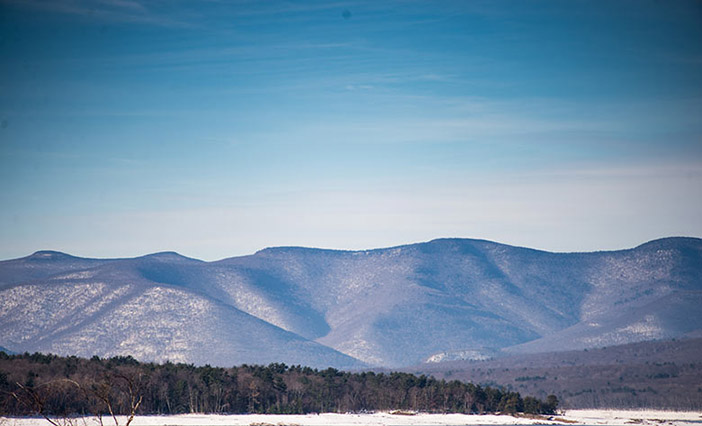
New plans to expand mountain bike and cross country ski trails throughout the Catskills are coming forth this spring in the form of a proposed revision to the state Department of Environmental Conservation’s Unit Management Plan (UMP) for more than 6,106 acres of forest preserve lands in the Shandaken Wild Forest, which is located in the central Catskills within the Ulster County town of Shandaken and adjacent Greene County town of Lexington. But the shifts in the state’s 2005 UMP appears to be but the tip of a larger shift in land use for the entire region, as well as the massive Adirondack Forest Preserve, that’s in keeping with major changes in the ways younger generations are approaching nature and their relationship with it.
“DEC is seeking public input on how to best manage these lands while providing access to a variety of outdoor recreational activities consistent with the Catskill Park State Land Master Plan,” reads last week’s press release from Region 3 Regional Director Kelly Turturro on the UMP revisions. “DEC’s goal is to protect the natural resources, provide outdoor recreational opportunities for residents and visitors, and ensure the Forest Preserve is an asset to the communities and a benefit to local economies.”
Taking a broader look at the state’s latest proposal for uses of the central Catskills Shandaken Wild Forest and its potential consequences for the entire forest preserve, Catskill Center executive director Jeff Senterman reflected this week that it ties in with a number of larger patterns he and others who work within the region have been noticing.
“We are seeing increasing levels of visitors who are coming to the region,” he said. “At the same time, there’s a growing recognition of the economic and public health benefits of this newfound popularity.”
Senterman went on to talk about a history of Catskill Park trails that focused for years on strenuous hiking up and down mountains. Now there’s a new emphasis on rail trails into the region, and a recognition that multi-user trails would open up opportunities for forest preserve access to many who’ve been unable to work with what’s traditionally been available. He highlighted the new Windham Path in Greene County, which allows for walking, jogging, and even bicycling along a well-built trail adjacent to a river.
“It’s a different kind of experience,” he said.
Similarly, the director of the Catskill Center — which has long prided itself as a champion of both the region’s conservation as well as development needs throughout its 49-year history — noted the maturation of mountain biking as a recreational sport in recent years. It’s now got its own destinations, including Windham in the Catskills, and seems to have finally drawn the interest of the state as a proper use for the many trails of its forest preserves in the Catskills and Adirondacks.
DEC spokesperson Wendy Rosenbach, who stressed the process-oriented element in the current plan’s amendment proposal — and the way it incorporates recent additions to the Shandaken Wild Forest tied to negotiations involving the nearby Belleayre Mountain ski center expansion and Belleayre Resort development process — noted that “DEC doesn’t necessarily think in these terms, but we definitely want people to get outside and use our lands.”
She referred back to the definition of wild forests within the Catskill Park as being for heavier use than designated wilderness areas, but less than the intensive use areas such as the ski center or nearby Pine Hill day use area. Some new recreational facilities already created within the Shandaken Wild Forest include a trail system, a lean-to in Rochester Hollow, and an accessible fishing pier on Lower Birch Creek property.
Alan Rosa, Executive Director of the Catskill Watershed Corp., noted for this story that “The CWC is happy to help more people enjoy the Catskills and to recognize the treasure we have here. It’s not so much a shift in use as an expansion beyond traditional hunting, fishing and hiking. The Catskill Park has something for everyone. We think it offers great potential for small business development.”
“The idea is to let the Catskills be what they’ve always been, a quiet place for people to retreat and relax,” added Catskill Mountainkeeper’s Kathy Nolan, who also serves as an Ulster County legislator for the Catskills. “All of these new uses are relatively low impact, and in addition to increasing access to the Catskill Park, allow for the region to become less reliant on winter as its main season.”







